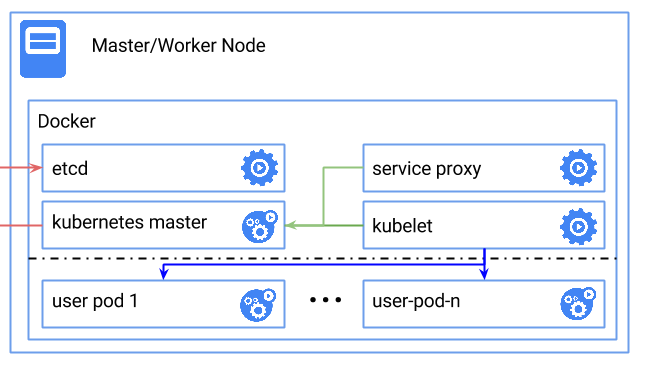
- #Ubuntu docker and kubernetes how to
- #Ubuntu docker and kubernetes install
- #Ubuntu docker and kubernetes upgrade
Your Kubernetes control-plane has initialized successfully! After a few minutes of installation, you should see the message:
#Ubuntu docker and kubernetes how to
If you do not know how to check inet IP - read the instructions from the previous post. Remember to change – apiserver-advertise-address=192.168.0.129 with your VM inet address. Now we can create a single node cluster: sudo kubeadm init -pod-network-cidr =10.244.0.0/16 -apiserver-advertise-address =192.168.0.129 -ignore-preflight-errors =NumCPU
#Ubuntu docker and kubernetes install
I will present some of the most important steps that will create a working cluster in a few minutes.Īt the beginning, install kubectl using the following command: sudo apt-get update & sudo apt-get install -y apt-transport-https & curl -s | sudo apt-key add. Detailed documentation is available on the kubernetes website. We will use kubeadm which helps bootstrap Kubernetes cluster. Check if Docker and Kubernetes were installed using the commands:ĭocker version 18.09.7, build $ kubectl versionĬlient Version: version.Info Creating Single Node Kubernetes Cluster with Kubeadm In the end, turn off the swap on Ubuntu Server because it is required in the changelog: sudo swapoff -a sudo sed -i '/ swap / s/^\(.*\)$/#\1/g' /etc/fstab Sudo apt install -y kubeadm kubelet kubernetes-cni Then use the following commands to install Kubernetes: sudo apt-get update & sudo apt-get install -y apt-transport-https & curl -s | sudo apt-key add -Įcho "deb kubernetes-xenial main" | sudo tee -a /etc/apt//kubernetes.list & sudo apt-get update Sudo add-apt-repository "deb $(lsb_release -cs ) stable" sudo apt update & sudo apt install docker-ce First, use the following commands to install Docker: Let’s start with turning on the VM with Ubuntu Server and connecting via SSH to the machine (I described this in the previous post). Installing Docker and Kubernetes on Ubuntu Server Now we will be installing and configuring Docker and Kubernetes on our Ubuntu Server. In the previous post, we have prepared an environment for work.
#Ubuntu docker and kubernetes upgrade
To upgrade your Kubernetes cluster to the latest version, select Reset Kubernetes Cluster.

The status of Kubernetes shows in the Docker menu and the context points toĭocker Desktop does not upgrade your Kubernetes cluster automatically after a new update.


When Kubernetes is enabled and running, an additional status bar item displaysĪt the bottom right of the Docker Desktop Settings dialog. This instantiates images required to run the Kubernetes server as containers, and installs the /usr/local/bin/kubectl command on your machine. Most users do not need this option.Ĭlick Apply & Restart to save the settings and then click Install to confirm. To see these internal containers, select Show system containers (advanced). Service ls, because managing them manually is not supported. Running as a Docker container, go to Preferences > Kubernetes and then click Enable Kubernetes.īy default, Kubernetes containers are hidden from commands like docker To enable Kubernetes support and install a standalone instance of Kubernetes If you installed kubectl using Homebrew, or by some other method, andĮxperience conflicts, remove /usr/local/bin/kubectl. $ kubectl config use-context docker-desktop


 0 kommentar(er)
0 kommentar(er)
